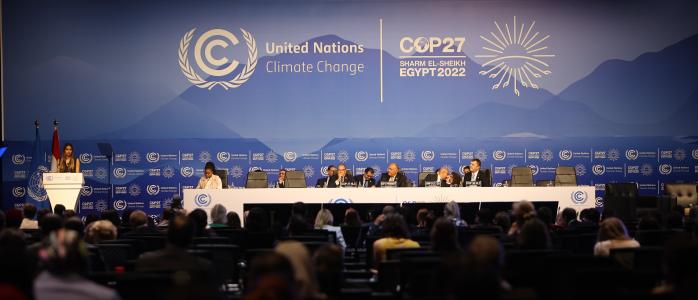



The COVID-19 pandemic has caused millions of deaths worldwide, increased inequality, tested international crisis management, and triggered widespread unrest. Climate change could lead to similarly dire consequences if allowed to proceed untrammelled. A new report from the Intergovernmental Panel on Climate Change (IPCC) projects that our planet could exceed the 1.5°C warming limit laid out in the Paris agreement in the early 2030s. Further, the window for action to pre-empt the most catastrophic warming scenarios is narrowing rapidly. But as we advance, any global strategy for accelerated climate action should include a reckoning of the developed world’s inadequate mitigation efforts in the pre-2020 climate regime. Indeed, India’s environment minister, Bhupendra Yadav, called the IPCC findings “a clarion call” for developed countries “to undertake immediate, deep emission cuts and decarbonisation of their economies”.
The pre-2020 climate regime comprised two commitment periods, each corresponding to a key agreement on emissions reduction: the Kyoto Protocol (2008-12) and the Doha Amendment to the Kyoto Protocol (2013-20). In a new study, the Council on Energy, Environment and Water (CEEW) highlights that developed countries collectively exceeded their carbon space by around 25.5 gigatons of CO2 equivalent (GtCO2eq) during this period. For perspective, this additional consumption was equivalent to almost 9 times India’s emissions levels in 2016 and more than half of global emissions in 2019. It happened for two main reasons: the non-participation of some major developed countries in one or both commitment periods, and the use of loopholes in accounting provisions.
The US withdrew from the Kyoto Protocol in 2001. The agreement required only industrialised nations to cut emissions, which Washington saw as unfair and harmful to the US economy. Canada, too, dropped out, stating that the penalties for non-compliance would cripple its economy. It argued that the Kyoto Protocol was outdated since it did not cover the contributions of large emitters like the US and China, which share more than half the world’s available carbon space. Japan and New Zealand also did not accept new reduction targets set by the Doha Amendment and sat out the 2013-2020 commitment period.
The Kyoto Protocol required developed countries to reduce emissions to 5 per cent below 1990 levels. Under the Doha Amendment, they were required to further cut emissions to 18 per cent below base year levels. But several non-participating developed countries were well short of these targets as recently as in 2019. New Zealand’s emissions were about 26 per cent higher than 1990 levels, followed by Canada’s at 21 percent. Further, the US emitted 11% and 26% per cent more than its estimated carbon space under the two agreements, respectively.
Figure 1 shows country-wise comparison of estimated carbon space of the non-participating developed countries versus their emissions in the pre-2020 period.
CEEW’s study includes a ranking of developed countries’ climate mitigation efforts in the pre-2020 period. European countries have performed best: Sweden is ranked first, followed by the United Kingdom (UK), Belgium, Denmark, and Finland. Most economies in transition (former Soviet nations) fall in the middle, while non-participating countries like the US and Canada are ranked in the bottom half.
As Figure 2 shows, the US is the largest emitter, contributing to a staggering 54 per cent of the total additional usage of carbon space from non-participating countries during the Doha Amendment. It is followed by Turkey, Japan, and Canada at 13 per cent, 9 per cent, and 8 per cent, respectively.
The consequences of pre-2020 climate action gaps are economic (costlier mitigation efforts), environmental (increase in extreme weather events), and political (concerns that developing countries will have to take up the slack in mitigation efforts). This last issue is of particular concern. We must not try to compensate for the failure of developed nations to show climate leadership by demanding aggressive emission reductions efforts from the developing world. Instead, we must:
If developed countries do not urgently enhance their climate commitments and address gaps from the pre-2020 period, they will struggle to retain the international community’s trust as they make new pledges to save the world.
Jhalak Aggarwal is a Research Analyst, Sumit Prasad is a Programme Associate; Send your comments to [email protected].






Add new comment